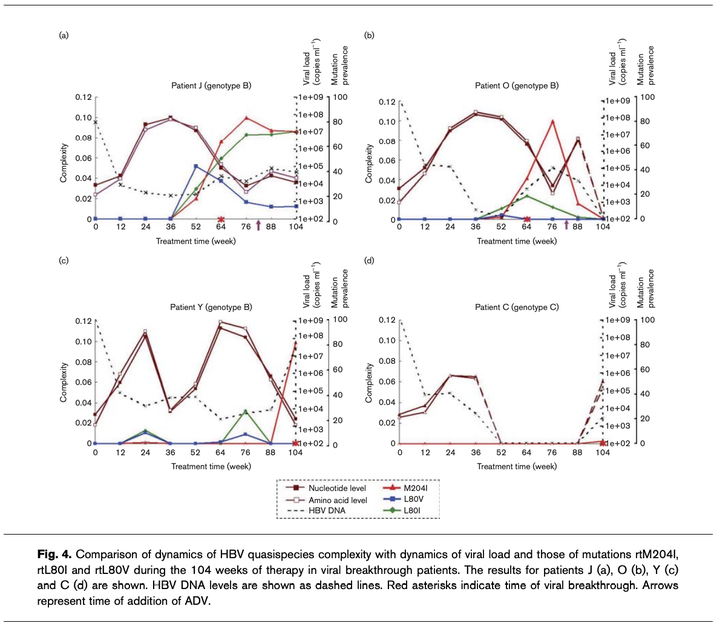Resistant mutations and quasispecies complexity of hepatitis B virus during telbivudine treatment"
 Image credit: Unsplash
Image credit: Unsplash
Abstract
Ultra-deep pyrosequencing (UDPS) was used to analyse the dynamics of quasispecies and resistant mutations during telbivudine (LDT) treatment of hepatitis B patients. Twenty-six HBeAg-positive chronic hepatitis B patients were treated with LDT for a period of 104 weeks and were characterized as 16 responders, six partial responders and four viral breakthrough patients based on hepatitis B virus (HBV) DNA levels. The plasma samples were subjected to UDPS of the reverse transcriptase (RT) region of HBV. Mutations rtM204I, rtL80I and rtL80V were detected in at least three of the four viral breakthrough patients, indicating the significant roles of the mutations in resistance to LDT. The degree of complexity of viral quasispecies remained in a steady state in the absence of selection pressure, but increased after the LDT treatment. The complexity in the responder group at week 12 was significantly higher than that in the group comprising partial responders and viral breakthrough patients. In vitro replication efficiency analyses showed that the RT mutations had different impacts on HBV replication, with a tendency of rtM204I>rtL80V>rtL80I. Furthermore, double mutations rtL80I/M204I and rtL80V/M204V had replication efficiency similar to that of rtL80I and rtL80V, respectively. Consistent with previous studies, mutation rtM204I was found to be highly resistant to LDT. However, in contrast with their sensitivity to lamivudine, rtL80I and rtL80V were moderately resistant to LDT. Our results indicated that rtL80I and rtL80V may not only serve as replication complementary mutations to rtM204I, but also directly contribute to the LDT resistance.